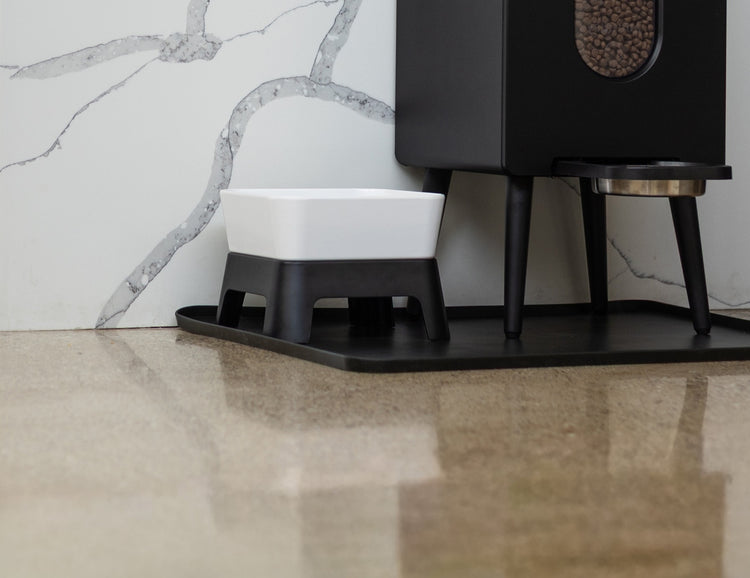Do Dogs Like Snow? Discovering Our Pups' Winter Wonderland Joy
- Houndsy
Table of Contents
- Introduction
- Why Do Dogs Love Snow?
- Safety Considerations for Dogs in the Snow
- Fun Activities to Enjoy with Your Dog in the Snow
- Conclusion
- FAQ
Introduction
Picture this: a fresh blanket of snow covering the landscape, glistening under the winter sun. As soon as we step outside with our furry companions, their excitement is palpable. Dogs bounding through the snow, noses buried deep, and tails wagging with uncontainable joy—it's a sight that warms our hearts. But have you ever pondered why our canine friends seem to revel in this icy wonderland?
Recent studies and anecdotal evidence suggest that many dogs do indeed enjoy snow, but the reasons behind this enthusiasm can vary significantly among breeds and individual personalities. From the sensory stimulation snow provides to the sheer novelty of a transformed environment, there is much to explore. In this blog post, we will delve into the question, "Do dogs like snow?" and uncover the reasons behind their frosty frolics. We aim to provide insights into how snow affects our dogs, explore safety tips for snowy play, and share fun activities to enjoy with your pet during the winter months.
By the end of this article, we hope to deepen your understanding of your dog's relationship with snow and inspire you to embrace the winter season together—safely and joyfully.
Why Do Dogs Love Snow?
1. The Novelty Factor
One of the primary reasons dogs are drawn to snow is its novelty. Just like us, dogs thrive on new experiences. Snow transforms familiar landscapes into exciting, new playgrounds. It changes the scents in the air and the textures beneath their paws, providing a rich sensory experience that can stimulate their natural instincts.
When dogs encounter snow for the first time, they may respond with curiosity, exploration, and unrestrained joy. The thrill of discovering how snowflakes feel against their fur or the delight of digging through a snowbank can be exhilarating. This novelty can evoke a playful spirit reminiscent of childhood, prompting dogs to run, jump, and frolic with abandon.
2. A Playground for Exploration
The winter landscape offers dogs an intriguing environment to explore. Snow can cover up familiar scents, forcing dogs to engage their noses more actively as they search for hidden treasures beneath the white blanket. This exploration taps into their predatory instincts, as they dig and sniff out scents that have been masked by the snow.
Moreover, the visual transformation of their surroundings can also stimulate their curiosity. Dogs are highly visual creatures, and the stark contrast of white snow against various colors can create a captivating scene for them. It's akin to a child playing in a ball pit or a new play area—everything about it is fresh and exciting.
3. The Sensory Experience
For many dogs, the sensation of snow is delightful. The coldness against their fur, the crunching sound beneath their paws, and the soft, fluffy texture are all elements that can intrigue and excite them. Just as we might enjoy the feeling of running through waves at the beach, dogs can find joy in the tactile experience of snow.
This sensory engagement is not just about fun; it can also provide mental stimulation. Engaging with the snow can encourage dogs to think critically about their environment and enhance their problem-solving skills as they navigate through it.
4. Social Interaction
Snow often brings families and friends together, and dogs thrive on social interactions. Whether it's chasing after snowballs, playing with other dogs, or simply enjoying the presence of their human companions, the winter season can provide ample opportunities for social engagement. Many dogs find happiness in joining their owners in outdoor activities, further reinforcing their love for snow.
5. Play and Exercise
Snow provides a unique playground for dogs to engage in physical activity. Activities such as chasing snowballs, running through snow drifts, or even engaging in a light-hearted game of tug-of-war with a snowy stick can be incredibly stimulating. The cold weather encourages dogs to be more active, burning off pent-up energy and keeping them fit during the winter months.
Safety Considerations for Dogs in the Snow
While many dogs enjoy snow, it's essential to keep their safety in mind. Here are some tips to ensure your pup has a safe and enjoyable time in winter conditions:
1. Monitor Temperature Tolerance
Different dog breeds have varying tolerances for cold temperatures. Larger breeds with thick coats may handle the cold better than smaller breeds or those with shorter fur. Always monitor your dog's behavior for signs of discomfort or distress. If your dog starts shivering, whining, or shows reluctance to stay outside, it's time to head back indoors.
2. Avoid Ice and Salt
When walking your dog in snowy conditions, be cautious of ice and salt used for de-icing sidewalks. Ice can pose slipping hazards, and ingesting salt can lead to health issues. If your dog is prone to licking their paws, consider applying pet-safe paw wax to protect their feet from irritation.
3. Watch for Hypothermia
Hypothermia is a serious risk for dogs exposed to cold for extended periods. Signs of hypothermia include shivering, lethargy, weakness, or difficulty breathing. If you notice any of these symptoms, seek veterinary attention immediately.
4. Clean Up After Playtime
After a fun day in the snow, it's crucial to check your dog for any snow clumps stuck in their fur, particularly between their toes. These clumps can cause discomfort and lead to frostbite if left unattended. A simple grooming session will ensure your dog stays comfortable once back indoors.
5. Keep Hydrated
Just because it's cold outside doesn't mean your dog shouldn't stay hydrated. Ensure they have access to fresh water after playing in the snow, as the cold air can be dehydrating.
Fun Activities to Enjoy with Your Dog in the Snow
Winter doesn't have to be a time of hibernation for you and your dog. Embrace the season with these creative activities that enhance your dog's enjoyment of snow:
1. Snowball Fetch
Turn the snowy landscape into a thrilling game of fetch! Use soft snowballs instead of traditional balls, and toss them for your dog to chase. This game allows for great exercise while ensuring you both have fun together.
2. Scavenger Hunts
Hide treats or toys in the snow for your dog to find. This activity engages their senses and provides mental stimulation as they dig and sniff to uncover their hidden treasures.
3. Snow Obstacle Course
Create a mini obstacle course in your backyard using snow. Set up mounds for your dog to jump over, tunnels to crawl through, and paths to navigate. This not only keeps them active but also provides an exciting challenge.
4. Snowy Playdates
Arrange playdates with other dogs in the snow. The social interaction and excitement of playing together can enhance your dog's enjoyment of the winter wonderland.
5. Indoor Fun
When the temperatures dip too low, don’t forget about indoor activities! Engage your dog with indoor games, such as hide-and-seek or training sessions. This helps maintain their mental agility while keeping them warm.
Conclusion
As we’ve explored, the question of whether dogs like snow encompasses a rich tapestry of sensory experiences, playful exploration, and the joy of social interaction. While many dogs revel in the snowy landscape, each dog has its personality and preferences that shape its response to winter conditions. By understanding these nuances and prioritizing safety, we can ensure that our furry friends enjoy the season to the fullest.
So, as the snow begins to fall, let’s embrace the wonder of winter together with our pups. Whether it’s through spirited playtime in the snow or cozy indoor activities, let’s make every moment count.
If you’re looking to enhance your pet care routine and make feeding times more convenient, consider checking out the Houndsy Kibble Dispenser. Our innovative design simplifies feeding, allowing you to focus more on the joyful moments with your furry friend this winter.
FAQ
Do all dogs enjoy snow?
Not all dogs have the same affinity for snow. While many dogs love the novelty and sensory experiences that snow provides, some may dislike cold weather or find it uncomfortable. Breeds with shorter coats or smaller sizes may prefer to stay indoors during snowy conditions.
Can snow be harmful to dogs?
Snow can pose a risk of hypothermia, especially if dogs are exposed for too long. Additionally, ice and de-icing salts used on sidewalks can irritate their paws or lead to ingestion issues. Always supervise your dog during snowy play and monitor for signs of discomfort.
How can I keep my dog warm in the snow?
To keep your dog warm, limit their time outdoors in the snow, especially if they have a short coat. Consider using dog sweaters or jackets designed for colder weather. Additionally, always check their paws for snow clumps and provide warm water to drink.
What should I do if my dog gets snowballs stuck in their fur?
If your dog gets snowballs stuck in their fur, gently remove them with your hands or a warm cloth. Avoid pulling on their fur, as this can cause discomfort. Regular grooming after snowy play can help prevent snow buildup.
Are there any fun activities to do with my dog in the snow?
Absolutely! Engage your dog with activities like snowball fetch, scavenger hunts, or creating a snowy obstacle course. These activities provide mental stimulation and physical exercise while enhancing your dog's enjoyment of the winter season.
Let’s celebrate the joy of winter with our furry companions, making memories that will last a lifetime!












